2021 VSDA Finalist: Montrose Primary School
We’re proud to announce that we are finalists in the 2021 Victorian School Design Awards for our work at Montrose Primary School.
These awards celebrate the role architects play in making Victoria a world leader in school design. They also recognise the innovation, creativity and practicality architects bring to designing new, or modernising existing Victorian government schools.
Our design for this much-loved primary school in the foothills of the Dandenong Ranges creates an exceptional new facility, featuring a full competition grade basketball court with spectator seating, a fork-to-fork kitchen garden program, unisex facilities and flexible learning environments.
A special thank you to all the staff and students at Montrose Primary School, the Victorian School Building Authority (VSBA) and the design and construction team: at H2o, Tim, Vieri, Agatha, Teresa and Kate, Hive Engineering, Fryda Dorne & Associates, Kinban Building Consultants, Ziebell Landscape Architecture and builders, Jointly.
Keep your eye out for the announcement of the 2021 winners later this month.
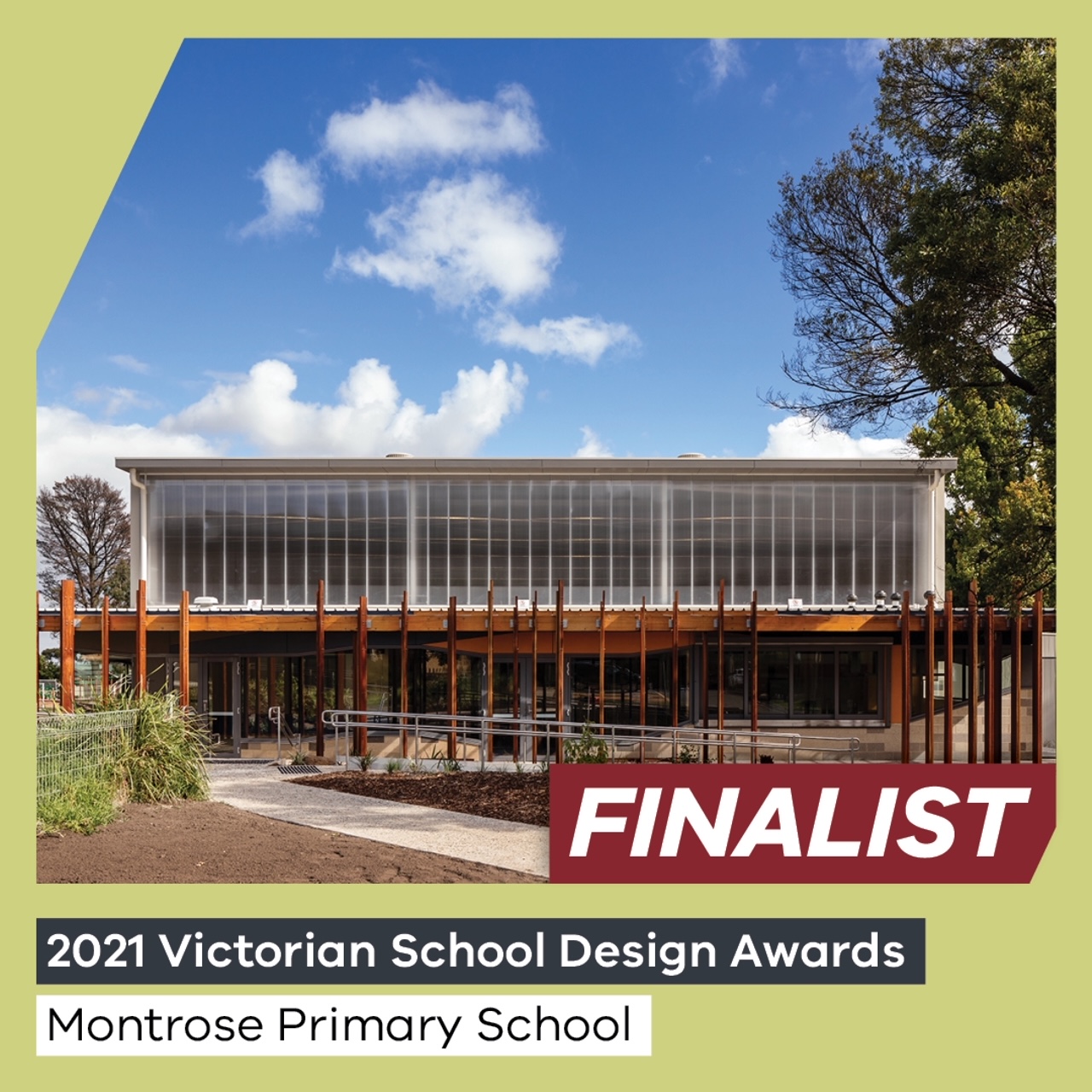
“The gymnasium offers a platform for teachers to collaborate for professional learning and a place where all students and staff, as well as the wider community, can meet for a wide variety of events in state-of-the-art facilities”, Glenn Storr, Assistant Principal, Montrose Primary School. Photography by Trevor Mein.
Boyd’s Linden House to feature at Open House Hobart 2021
We’re excited to see Robin Boyd’s Linden House included in this year’s Open House Hobart. Held over the 13 – 14 November, the program gives rare public access to some of Hobart’s most unique buildings. And for the first time, the opportunity to step inside one of Boyd’s hidden masterpieces.
Earlier this year, H2o Director Tim Hurburgh visited the current owners of Linden House to discover the story behind Boyd’s re-imagining of a rural farmhouse for Houses magazine. One of Boyd’s lesser-known works, Linden House is located a short drive from Hobart, on the banks of the Derwent River in Plenty. Boyd and the original owners shared a passion for Japanese design and were inspired by the Derwent Valley’s all-timber oast houses.
Boyd designed the house to be a magnificently scaled, multipurpose glazed pavilion that “floats” between the pool and the river. Linden House is still remarkably intact after nearly 60 years — right down to the painting of the front door in Boyd’s favoured semi-gloss forest green.
Linden House is open from 10am – 4pm on Saturday 13 November. Tim will also be at Linden House all day to answer design queries. Visit Open House Hobart for details of the full 2021 program.
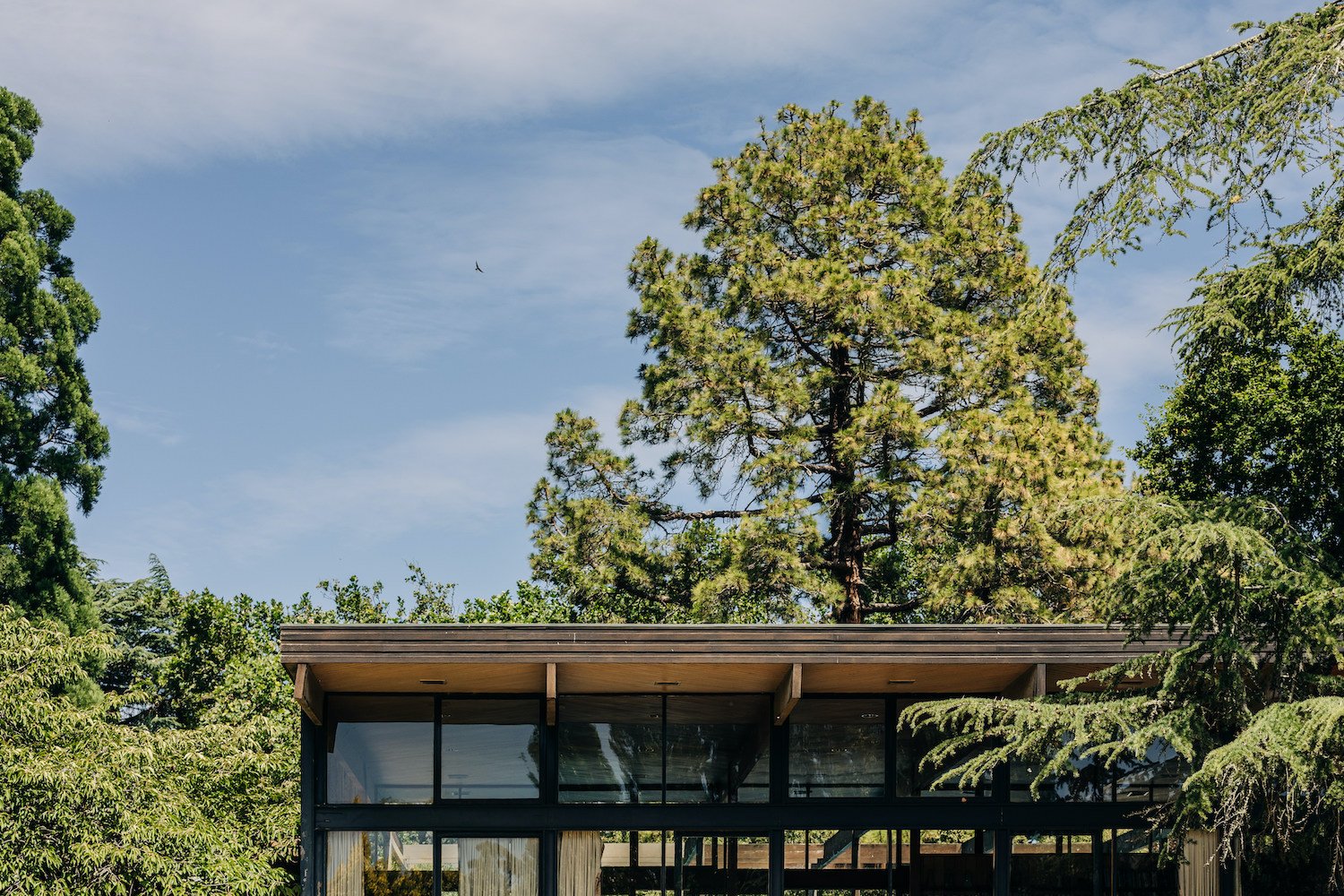
Boyd’s only work in Tasmania, he extensively re-imagined a rural farmhouse into a masterful composition of timeless elegance and simplicity. Photography by Adam Gibson.
Designing a greener built environment
As architects, we understand the impact our work has on global emissions and the importance of accelerating sustainable architecture and building practices. To support the upcoming United Nations COP26 climate change conference, we’re taking stock of some of our most sustainable innovations and projects to date with the hope that they inspire ourselves, our industry and our partners.
H2o’s commitment to sustainable innovation, and track record in sustainable design and adaptive reuse projects spans decades. Notable projects include the Advanced Technology Centre at Swinburne University, the first education building in Australia awarded a 5 Star Green Building Council of Australia rating; Australia’s largest research greenhouse, the highly specialised Plant Accelerator at the University of Adelaide; and the RMIT University Textile Facility, Australia’s first large scale institutional or commercial project to feature an all-timber façade.
Some of our earlier sustainability-driven projects include the 6 Star Green Star fitout for the Australian Conservation Foundation; and the award-winning Victorian SES Headquarters, a leading example of cost-effective, sustainable design. More recent projects include the International Centre and Business Buildings (ICBB) for Deakin University, a pioneering multi-level naturally ventilated institutional building; and our environmentally sensitive staged design for Truganina P-9 College.
As a practice, we’re committed to sustainable design that is practical and affordable, striving to reduce the impact of architecture on the built environment.
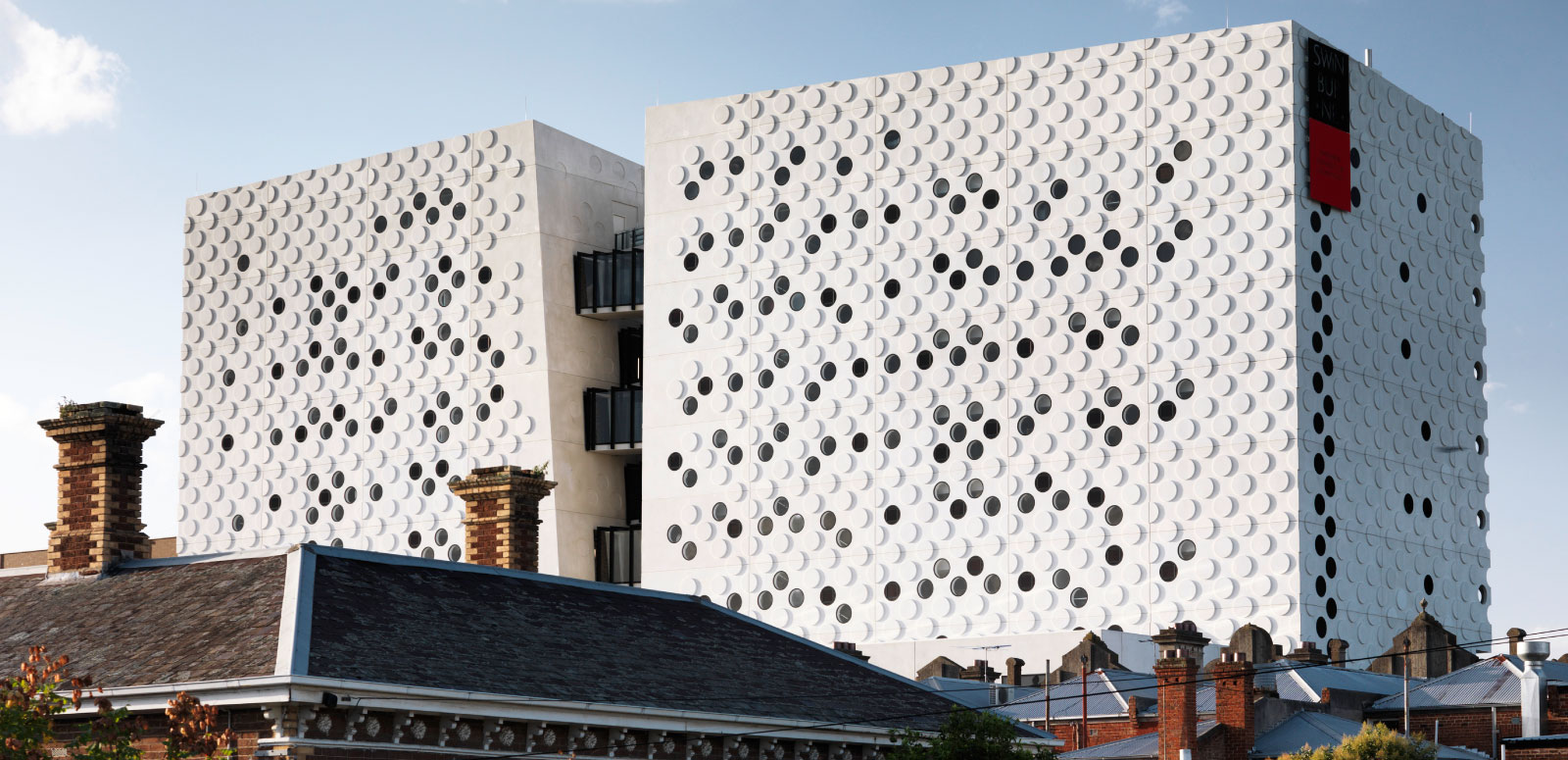
Pictured: Pioneering sustainable design, the Advanced Technology Centre at Swinburne University. Foyers, walkways and bridges are open, operating with natural ventilation for approximately 35% of the year. Photo by Trevor Mein.
A pioneering approach to tertiary design: Deakin University Central Precinct
With a renewed focus on flexibility and future-proofing in post-covid education design, we’re revisiting our pioneering Deakin University Central Precinct. Focussed on responsible, simple, practical and affordable sustainable design, Central Precinct set a benchmark for contemporary education design and construction.
⠀⠀⠀⠀⠀⠀⠀⠀⠀
Completed in 2006, the project consists of several buildings, including a multi-purpose recreation hall, administration and teaching spaces, lecture and meeting rooms, all designed with adaptability in mind.
With a focus on sustainability, the project also draws on passive design principles to optimise the effects of sun, wind and solar performance. The project won several awards at the 2006 City of Whitehorse Building a Better City Awards, including Best New Commercial Building, the ESD (Commercial) Award and the Mayor’s Choice Award.
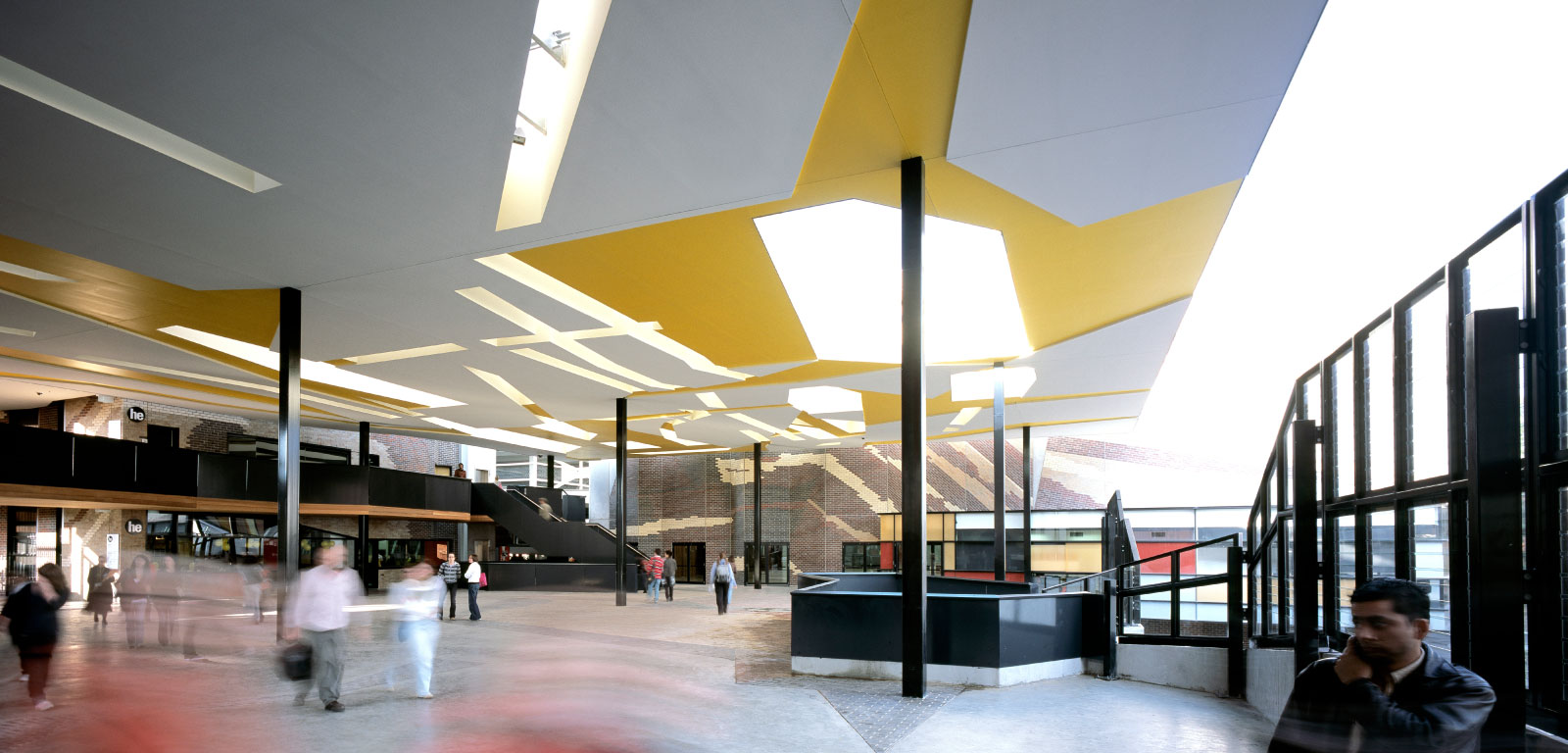
The “agora”, or atrium, provides a vibrant public space. Photo by Trevor Mein.
New projects on the drawing board
H2o Architects has a number of exciting new projects currently underway, including a masterplan for the expanding Montrose Primary School. Following the opening of the Montrose Primary School Gymnasium earlier this year, we’re pleased to once again be working with the school, the Victorian School Building Authority (VSBA) and wider Montrose community to redevelop the campus for future growth.
With the recent purchase of new land and a number of the school’s buildings no longer fit-for-purpose, our proposed masterplan seeks to maximise contemporary learning models to create a future-proofed, sustainable and connected campus.
Our design seeks to improve indoor and outdoor learning connections, landscaping and site circulation, pedestrian safety and staff car parking. Central to the plan is the reduction of the school’s carbon footprint through a targeted sustainable design response and focus on environmental issues.
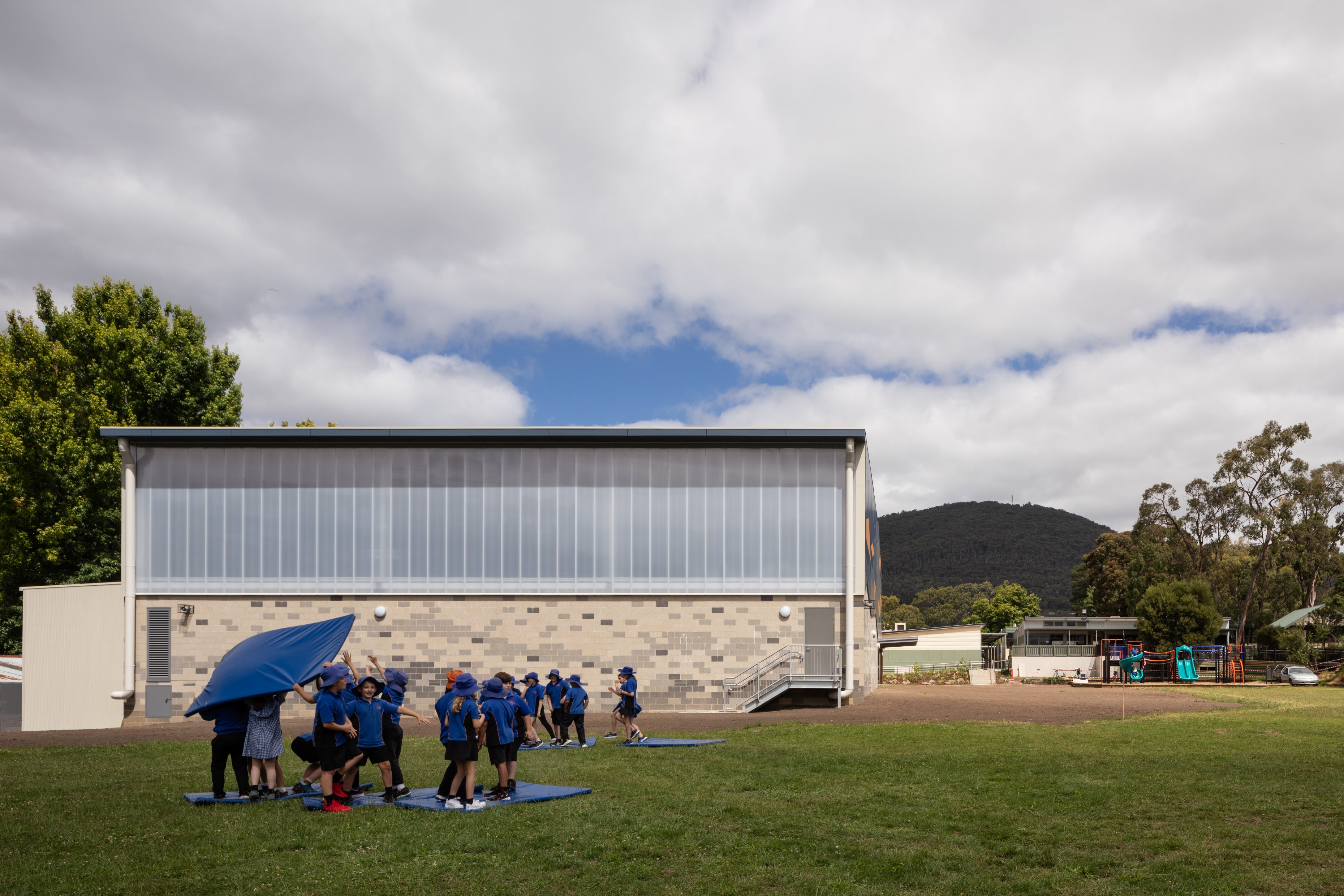
New project: the recently completed Montrose Primary School Gymnasium (pictured) will be at the heart of our proposed new masterplan to redevelop the school. Photo by Trevor Mein.
Building community: Truganina P-9 College
As students prepare to return to face-to-face learning in the coming weeks, we’re revisiting one of our favourite greenfield projects, Truganina P-9 College. A brand-new school for a growing community, the college is designed for flexibility and diversity, future-proofed to support one of Melbourne’s fastest-growing suburbs.
Located 21km west of Melbourne’s CBD, the college has grown from around 120 students in its first year, to almost 2000 students. Founded on the values of respect, resilience, responsibility and learning, the school has been central in building and connecting the diverse Truganina community.
“The college is located in the growth corridor of Victoria in Wyndham. And we get to impact the lives of so many students…with a completely diverse set of students and learners”. Brad Robertson, Learning Specialist Engagement & Agency Truganina P-9 College.
Designed and built over two stages, the first stage provides flexible learning areas to suit the varying needs across the co-educational Prep to Year 9 demographic. It was important the design of the buildings present a strong identity and connection to the community. The scale and materials choices reinforce the school’s presence in the fast-developing urban fabric, with new buildings positioned along the east and north boundary with clear entrance points.
Completed in 2017, the second stage includes a new gymnasium and shared drama area, with additional multi-purpose learning areas and specialist spaces. The spaces have been structured in a hierarchy of environments, suitable for different age groups and learning paths, as well as catering for the needs of different cultural backgrounds. The landscape design also caters for a range of outdoor curriculum, including science and food technology gardens, primary vegetable garden, sensory garden and performance areas.
As specialists in education design, we understand the importance of creating spaces that both enhance the learning experience for students and offer opportunities for community-building. Our current school projects under construction include the new McKinnon Secondary School gymnasium and the The Friends’ School Redevelopment in Hobart.
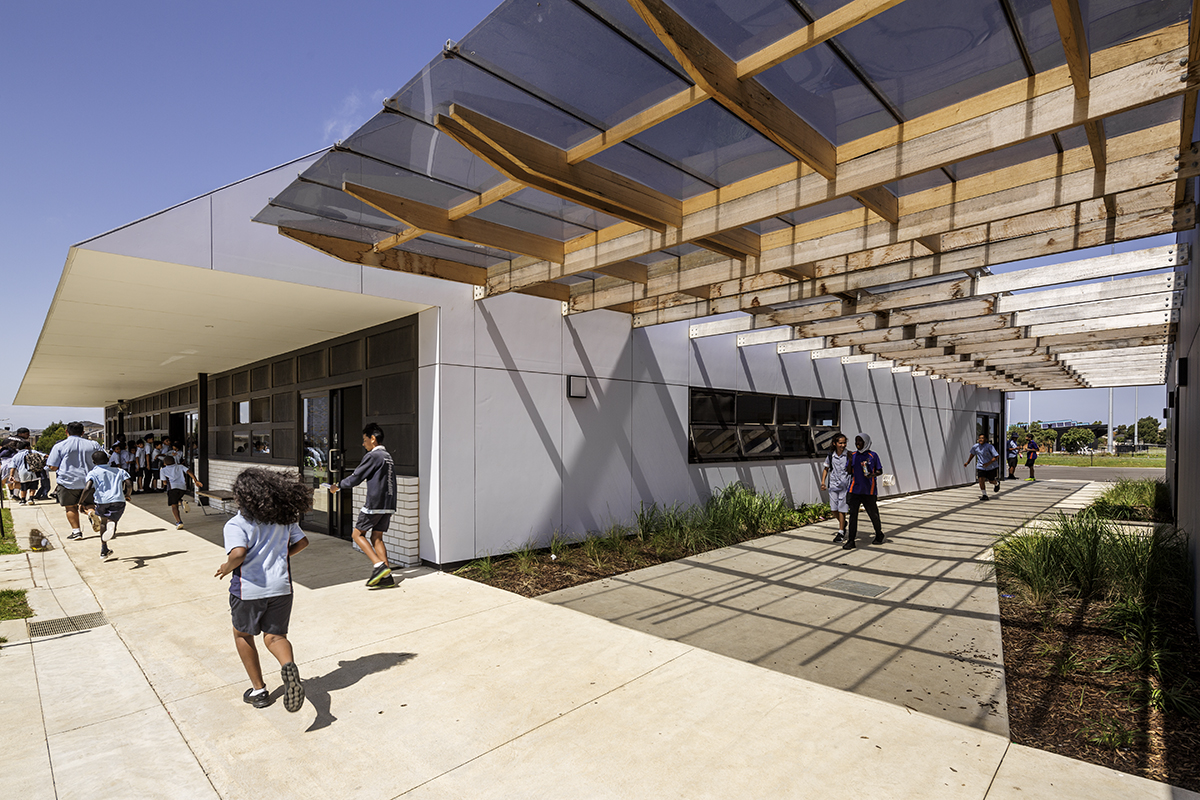
Truganina P-9 College. All buildings are north facing (except admin which faces east to the street), linked by generous, column free covered ways or north facing overhangs. Photo by Trevor Mein.
In focus: University of Technology Sydney New Science Research Facility
Thank you to our clients at UTS for sharing their latest video showcasing our New Science Research Facility. Featuring Australian-first purpose-built laboratories, the extension of building CB04 delivers high-impact research at a globally competitive scale, generate greater engagement with industry, support student outcomes, and create a more attractive and engaging campus.
Featured earlier this year in Architecture & Design, the facility is described as a space for “big ideas and big breakthroughs”, meeting the increasing demand for high-tech research space. An ambitious research facility determined to make a significant contribution to the challenges of our times, the new facility aims to attract the world’s best phenomics, advanced analytics, translational medicine and chemical synthesis researchers.
Our brief was to replace the existing single level building with a seven-storey facility with world-class laboratories and safety features. The new building on this challenging infill site needed to stand alone yet align with the floorplates of the adjoining buildings to improve connectivity with campus. We also needed to future proof the building itself, rigidising the frame so that ten more storeys could one day be added.
We took an organic approach to the lab interiors, introducing into the clinical uses a warm colourful identity mimicking ‘a new dawn’, rising in colour intensity at each floor of the building. Likewise, the new nitrogen generator is showcased on Level 4 at the vibrant re-designed entrance to the building from the pedestrian bridge. On the roof is an almost otherworldly ensemble of exposed critical infrastructure.
“This facility provides them (UTS researchers) with new tools to continue their ground-breaking work. It will also be an additional drawcard to our campus, giving us capacity to continue to attract top-level researchers from all over the world,” Patrick Woods, Deputy Vice-Chancellor and Vice-President (Resources) of UTS.
Beautifully captured in the video, the powder-coated UTS yellow flashes within window frames on the façade provide an energetic frisson – like a bolt of lightning. Drone video by UTS.
Post-Covid Series 3
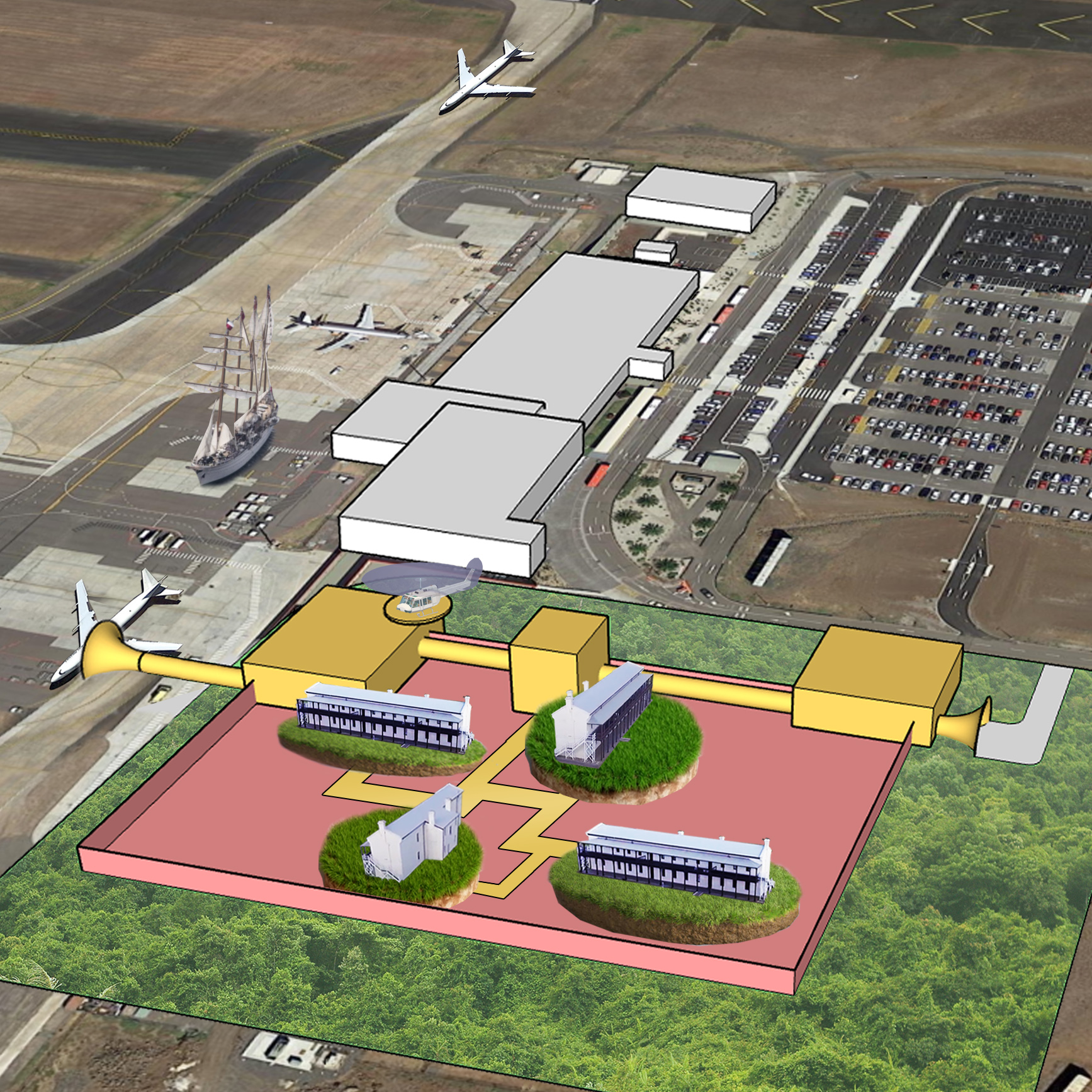
Architecture hacks: Melbourne 2030
Post-covid, we’re facing a radical shift in how we inhabit cities. We believe that architecture has a critical role to play in this evolution. Through a series of design provocations, our studio is exploring the role of architecture in revitalising now-dormant spaces.
Our first post-covid series explores how to regenerate the thousands of empty parking spaces across the Melbourne CBD, while our second series resurrects the iconic commercial towers of Collins Place into a vibrant self-sustaining residential hub.
In this series we reimagine Victoria’s historic Point Nepean Quarantine Station as a ready-made template to guide our current-day needs at the new quarantine site at Avalon Airport. Established in 1852, the station once provided Victoria defence against introduced maladies, and was used to separate, process, and quarantine travellers and livestock sailing in from Europe.
The station was equipped with all the necessities of a successful quarantine facility, including a secluded location, access to fresh air and sanitisation facilities. Key quarantine methods adopted during past pandemics such as the Spanish Flu included:
-a managed arrival and screening process
-the removal of infected passengers off ships immediately on arrival
-naturally ventilated, openable windows to access fresh air
-occupants isolated in individual rooms
-staff also isolated on the station to prevent infections in the wider community
-and no distributed services linking spaces, preventing direct occupant to occupant contamination.
So why design, test, and build a new quarantine facility when we can repurpose an existing facility within Avalon Airport?
In our design exploration, extra measures are proposed to ensure the facility is up to present-day quarantine requirements, including clear zone separation with an exclusion area monitored by a mounted division, new productive green space around the exclusion zone, and extra sanitization stations.
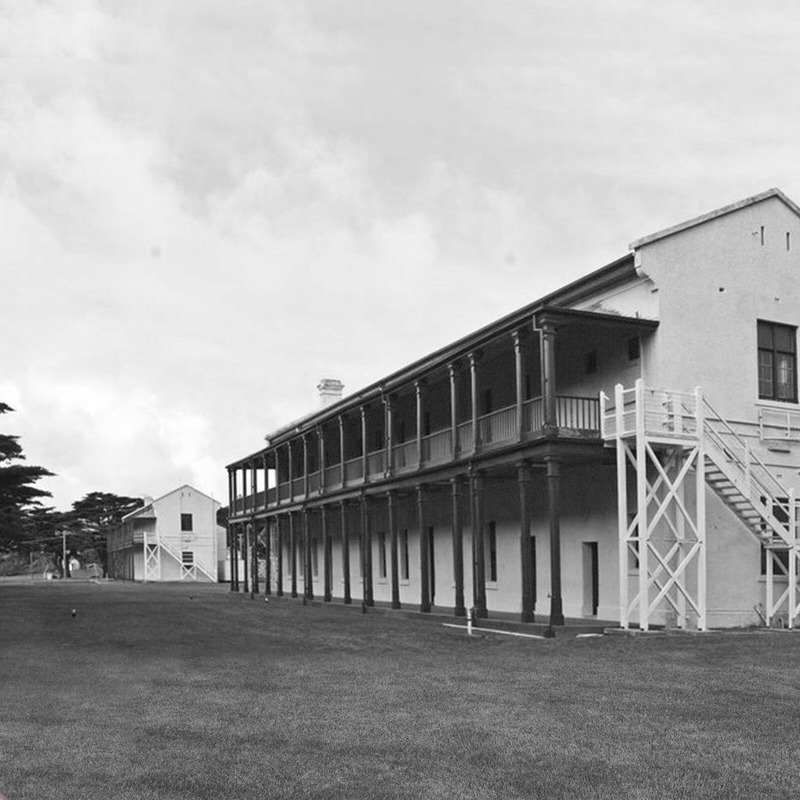
Travellers are funnelled in from (air)ships, processed and sanitised, and finally able to quarantine in separate quarters before continuing on their journey into Australia.
Yarra Ranges Civic Centre Redevelopment construction update
Currently in the final stages of construction, we look forward to seeing the completion of the Yarra Ranges Civic Centre Redevelopment in early 2022.
This major project involves extensive refurbishment and extension to the council’s Anderson Street offices into a flexible multi-purpose centre. Located within Lilydale’s main street, our design enhances underutilised public space to create a dynamic new civic hub.
Working closely with Ziebell Landscape Architecture (ZLA), and consultation with stakeholders, working and community groups, we have created a welcoming and accessible design influenced by the Yarra Ranges natural bushland setting. Designed to meet high-level sustainability targets, the project involves comprehensive upgrades to outdated services and infrastructure, and includes new Activity Based Working for staff.
The civic centre is one of several projects we’re working on that involves a strong indigenous focus. As one of the first Australian councils to adopt approaches towards reconciliation, Yarra Ranges Council is committed to raising awareness of indigenous issues, culture and history. From the outset, we engaged with Yarra Ranges Council Indigenous Advisory Committee (IAC) to ensure the new civic centre reflects council’s longstanding connection to its indigenous Wurundjeri heritage.
Through ongoing consultation with the IAC, key indigenous aspects informed the design, including the acknowledgment to country sign at the entry, a curated indigenous art installation, rooms named after indigenous community leaders, and indigenous signage throughout. The building’s exterior has also been shaped through our dialogue with IAC.
Click the video below for the latest site update from Johns Lyng Commercial Builders.
Nearing completion, the latest works on site include internal wall construction and plastering, along with window installation, roofing, stormwater and front entrance works to the exterior.
Celebrating 21 years: RMIT University Textile Facility
Completed in 2000, RMIT Building 513, Textiles, Clothing, Leather & Footwear Facility remains one of the most unique educational buildings in Australia. As the country’s first large scale institutional or commercial project to feature an all-timber facade, the design responds to RMIT’s commitment to enrich its built environment through innovative architecture.
The project’s pioneering use of timber sparked a resurgence in timber use on non- commercial buildings nationally. The choice of timber was inspired by H2o Director Tim Hurburgh’s desire to use the sustainable properties of timber in a major building. This choice was further informed by Tim’s experience working with timber structures in Germany during the 90s, and from his Tasmanian hometown, where surviving early nineteenth century hardwood timber buildings are commonplace. The building’s facade features an interlocking grid- patterned timber rain screen over a Tyvek weather- proof membrane. Its appearance, inspired by the weaving crafts taught and produced within, changing with varying light conditions. within, changing with varying light conditions. The facade’s rain screen was also the first, and largest, to be built in Australia at the time.
A standout feature of the 5,200sqm, three-storey facility is its thermal chimney, unique at the time. Designed to achieve passive solar temperature control, the building is only partially air conditioned. Working closely with the builder, project engineers, the Timber Promotion Council, and leading northern European researchers in timber facade systems, H2o developed an environmentally responsive method of construction to regulate internal temperature. The innovative “double skin” system aided by the upward air movement in summer of the thermal chimney limits heat transfer to the building interior. The “chimney” can be closed off in winter and opened in summer to facilitate summer cooling.
Twenty-one years on, the facility stands as one of the most influential education buildings of its time. True to the original brief, it exemplifies RMIT’s commitment to innovation and research, befitting its reputation as the global leader in fashion and textiles education.

Unfinished precast concrete panelling is used on the ground floor exterior with western red cedar cladding to the rest of the building. Photo by H2o Architects.
